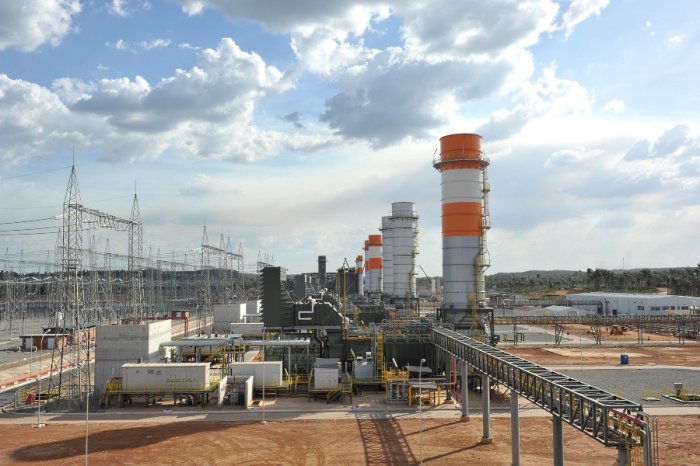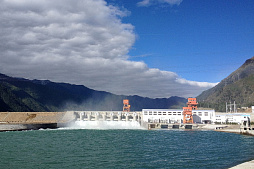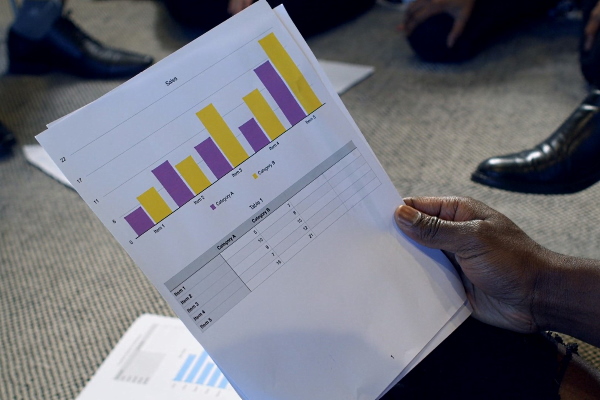To consider an application for financing, fill out the form and send it to us by e-mail along with the project brief, or contact our experts
To ensure the success of any investment, professionals are needed who are able to correctly analyze and evaluate an investment project.
Financial modeling is the main tool for this task.
In addition to a deep knowledge of finance, these professionals are proficient in the advanced models and tools needed to develop sound investment models.
These models should adequately reflect the investment process over time and show optimal results under various conditions, including stress scenarios.
The international company LBFL (Spain) has recruited a team of professionals in financial modeling.
We are ready to act as financial consultants in the financial assessment of investment projects in the energy, infrastructure, oil and gas industry and environmental projects.
Our financial specialists carry out a full assessment of investment projects, sensitivity analysis, financial forecasting, audit of financial and economic models, development of the optimal structure of an investment model and other services.
Financial modeling: the basics for investors
Professional financial modeling is an important condition for the successful implementation of investment projects, which is emphasized by leading experts from the World Bank and other international financial institutions and associations.The financial model is a presentation of the project based on its cash flow (indicating the amount and time of receipt or expenditure of funds).
Modeling investment projects allows businesses to assess the conditions and requirements for project implementation, as well as predict liquidity problems.
The project's cash flows must be streamlined in order to obtain key indicators for decision-making. The most common indicators include VAN, TIR, DSCR, etc. It is important to correctly identify potential costs associated with an investment project, such as construction, operation, maintenance, financing (repayment of loans, dividends to investors), etc.
The most important indicators that characterize an investment project and are the basis for calculating efficiency include the duration of the project's life cycle, the volume of initial investment, cash flow and the discount rate.
Key investment performance indicators
The number of criteria and models for assessing the effectiveness of investment projects is extremely extensive.Large corporations usually use their own special methods, developed taking into account the specifics of the type of activity and their own experience in managing financial resources.
Over the past 25-30 years, traditional approaches to solving such problems have been formed in the world. The most common is the calculation of key investment performance indicators. All groups of indicators are divided into discounted and undiscounted.
Undiscounted figures are calculated based on accounting indicators of income and expenses and do not take into account changes in the value of money over time. These metrics can be used on a case-by-case basis to evaluate highly profitable, low-risk projects.
For example, in the 1950s in the United States, oil and gas companies used the simplest metrics.
Unfortunately, in modern realities it is difficult to find a business area with such favorable conditions, therefore, entrepreneurs are forced to study in detail the conditions for investment and calculate the effectiveness of projects using complex discounted indicators.
Classic discounted metrics include:
• Net present value, (NPV).
• Internal rate of return (IRR).
• Discounted payback period (PBP).
• Profitability index (PI), etc.
These indicators should reflect from different angles the relationship between cash receipts from the investment project and the cost of implementation, discounted at a certain point in time.
Modern financial modeling takes into account numerous indicators, including cost of borrowed funds, inflation rate, risk level and asset liquidity.
Investment project life cycle
Each project, regardless of the complexity and volume of investments, goes through certain stages in its development.Changes in the characteristics of the project during the passage of these stages are of an evolutionary nature, that is, they are distinguished by a clear sequence of transformations in the functioning, structure and relations with the external environment.
Financial modeling should take into account the life cycle of an investment project, which is defined as the period of time between the moment the project appears and the moment it is liquidated.
The project life cycle is the starting point in researching financing problems, assessing project performance, and developing a strategic plan for project implementation.
When determining the life cycle, financiers pay attention to the following factors:
• Duration of demand for a product (phase of the product life cycle).
• The speed of technical progress, which affects the relevance of the project.
• Duration of buildings and equipment operation.
• Opportunities for alternative investments.
• Scheduled term for repayment of borrowed funds.
• Administrative restrictions.
• Industry life cycle.
The life cycle concept allows companies to create a dynamic model of project functioning, consisting of several stages.
These stages are called project phases. Due to the uniqueness and complexity of project implementation processes, it is difficult to create a universal scheme for dividing the project into phases.
The most common and widespread approach is to split the project into design and implementation phases. For each stage of the project, a set of financial indicators should be determined that serve to make the right investment decisions.

Modeling the financial risks of an investment project
The implementation of any investment project in the current environment is accompanied by a certain risk.The existence of risk is associated with the uncertainty of future conditions and project results. Making an investment decision under conditions of uncertainty is characterized by the fact that it is impossible to unambiguously predict its consequences.
The more uncertain the external and internal environment of the project, the more difficult it is to make an effective decision.
Project uncertainties include:
• Uncertainty of the future, since the initiators of the project cannot accurately predict certain indicators in the future, given the uncertainty of the market situation in several years.
• Unpredictable behavior of participants in a situation of conflict of interest.
• Changes in economic policy due to political necessity.
• The unpredictable emergence of new technologies and techniques.
• Unpredictable climatic conditions.
• Information uncertainty, etc.
The combination of these factors creates significant risks for investors and requires professional financial modeling services to predict and develop effective measures to minimize these risks.
Financial consultants strive to minimize the uncertainty of an investment project by obtaining high-quality and reliable information.
When making investment decisions, it is important to take into account the relationship between new investment projects and existing company projects. In this case, financiers carry out sequential calculations of the portfolio risk for various combinations of investment and production projects of the enterprise.
The risk analysis of the company's investment activities includes:
• Determination of the most significant risk factors and their qualitative assessment.
• Quantification of risk for specific investment projects.
• Portfolio risk analysis of the enterprise.
The portfolio risk analysis model reflects the contribution of various projects to the achievement of the financial and economic goals of the business and to identify synergies between projects.
The final choice of the structure of the company's project portfolio depends on the risk appetite of the company's managers, as well as on the economic prospects for the implementation of specific projects. The choice is made using mathematical methods of financial modeling, which show the relationship between the expected level of portfolio return, risk and other critical parameters.
By analyzing the investment risk in a given sequence and using modern mathematical models, the business can adequately assess the risk and determine its impact on the activities of the enterprise.
This approach leads to effective investment decisions.
Choosing the best investment model for your business
Although the world of investment is wide and diverse, it can be roughly divided into four investment models that provide unique business opportunities and benefits.In each case, our financial consultants will help your company plan a business exit strategy and thus anticipate difficult moments.
Price difference
This model is known as “buy low, sell high”.The main idea is to purchase valuable assets on favorable terms, in order to subsequently sell them at a higher price and make a profit.
To successfully implement this strategy, it is important to plan a few things. For example, if a company buys a product at a low price, it is important to find a market to offer that product. In this case, it would be ideal to prepare the market in advance.
The tricky part of this investment model, like any other investment, is getting out of business on time. The key to your success is to think of a confident exit strategy before entering a business.
Capital growth
The idea behind this model is to invest in the development of a promising business.In this model, the risk factor is important, since when investing in a young enterprise, we depend on such variables as time, competition, volatile market conditions, and others.
In addition to these aspects, it is important to understand that entering such a business can be easy, but it will be much more difficult to get out of it.
The following possibilities exist:
| Business share buyback | When an entrepreneur achieves his goal, he can buy out the investor's share of the business. The investor benefits from the fact that the business has increased its value from the foundation to the share buyback. |
| Sale to third parties | Many investors ultimately decide to sell their stake to other investors interested in the business. It is important to do this at a time when the business rises in value in order to make a profit. |
| Long-term earnings | Some investors decide to keep their stake in a young company in order to receive a permanent and stable income. |
The main thing for this investment model is to decide on an exit strategy to avoid difficult times and get the maximum profit.
Financial modeling helps investors predict the situation and achieve their goals.

Preservation of assets
This model is mainly aimed at preserving the assets of the company.Accordingly, it is important to invest in assets that will be of high value tomorrow and continue to generate income over time. While this strategy seems daunting at first glance, more and more companies are investing in “timeless” values such as agricultural land and art.
The key in this case is expert advice.
It is important to choose the right investment objects in order to make a profit in the medium and long term. If this model is based more on investor intuition rather than knowledge, the risks multiply.
Value creation
This is not really an investment model, except in rare cases.As the name suggests, the model is based on the creation of added value either through its own activities or through the efforts of others.
The success of an investor is highly dependent on factors such as professional market analysis, understanding of innovative technologies and new trends in certain industries, negotiation and business relationship building skills.
The risk of this model is that opportunities may be short-term and come to an abrupt end, requiring the investor to actively seek other alternatives.
Our financial modeling services
LBFL is an international company offering a full range of professional financial services, including financial modeling.Our clients include leading energy companies, industrial companies, government agencies and other customers.
LBFL is ready to provide unique financial solutions for the construction of the following facilities:
• Power plants of all types.
• Waste processing and incineration plants.
• Water treatment plants and desalination plants.
• LNG plants, regasification terminals and gas pipelines.
• Industrial facilities of any scale.
• Modern seaports and cargo terminals.
• Mining and processing plants, etc.
Together with partners from Spain and other European countries, we have recruited a team of experienced financial professionals who carry out detailed financial research, calculations, modeling, risk analysis and other services for business.
We also offer financing of large projects with an initiator's contribution of 10%, using borrowed funds from banks, private investors and investment funds.
Contact our consultants to find out more.
Our services:
• Preparation of a feasibility study for the project.
• Creation and management of SPV.
• Financing projects / investment lending.
• Financial consulting / modeling.
• Credit guarantees.
• Attraction of funding.
• Engineering design.
• Industrial engineering.
• Power engineering.
• Construction and modernization.
• Operation of facilities.
• Safety management.




























